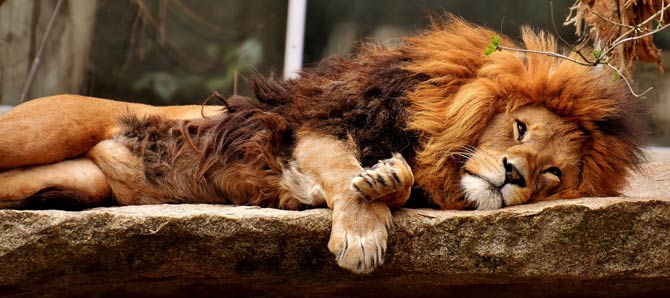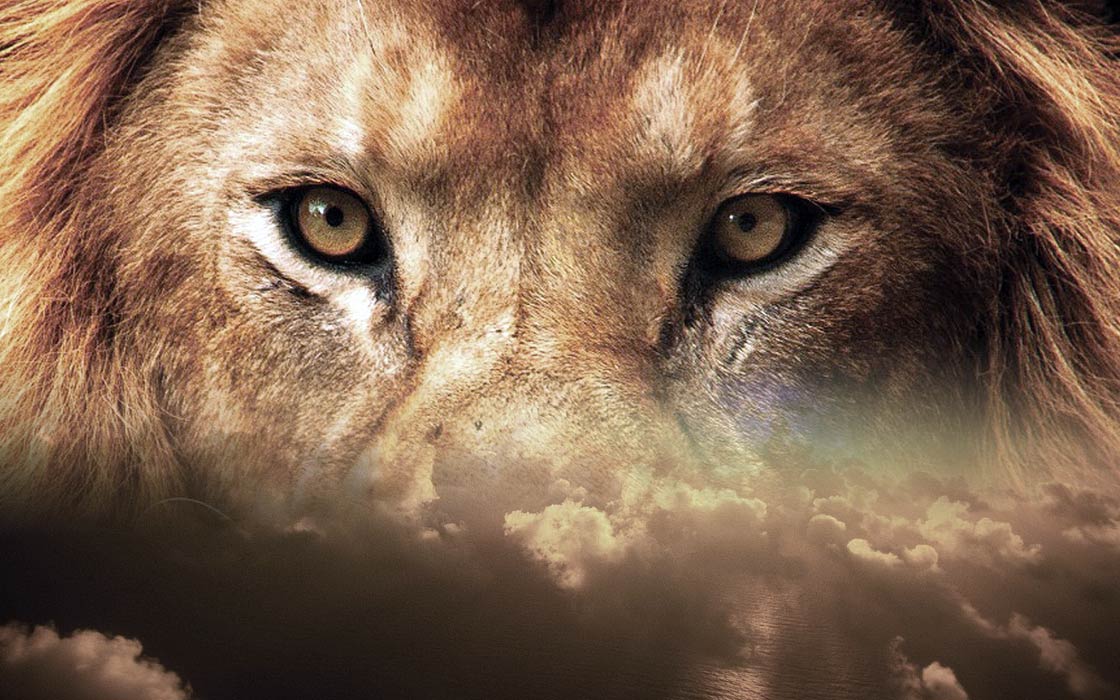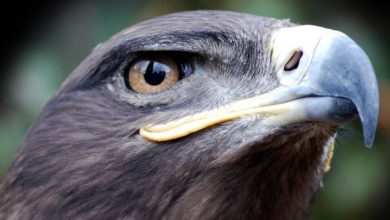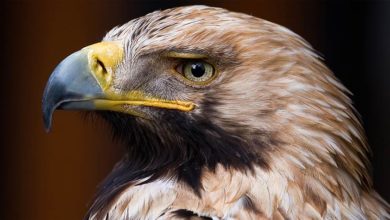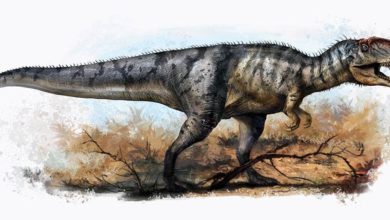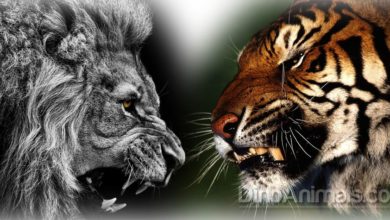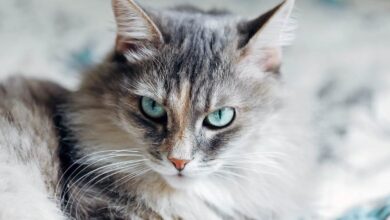Lion (Panthera leo)
African lions (Panthera leo) are large carnivorous mammals that are native to Africa. They are the most social of all big cat species, and are known for their distinctive mane, which is longer and thicker in males than in females. African lions are apex predators, meaning they are at the top of the food chain and have no natural predators.
African lions are apex predators, meaning they are at the top of the food chain and have no natural predators. They are adapted to a wide range of habitats, including savannas, grasslands, woodlands, and semi-deserts. They typically hunt at night and prey on a variety of animals, including antelopes, zebras, wildebeest, and buffalo.
Male lions are larger than females and can weigh up to 550 pounds (250 kilograms). They are characterized by their mane, which is a fringe of long, thick hair that surrounds their head and neck. The mane is thought to protect the lion’s neck during fights and to attract females.
Female lions are smaller than males, weighing up to 400 pounds (180 kilograms). They do not have a mane, but they are still powerful hunters and play a crucial role in the lion pride.
African lions are facing significant threats, including habitat loss, conflict with humans, and illegal hunting. They are listed as vulnerable by the International Union for Conservation of Nature (IUCN).
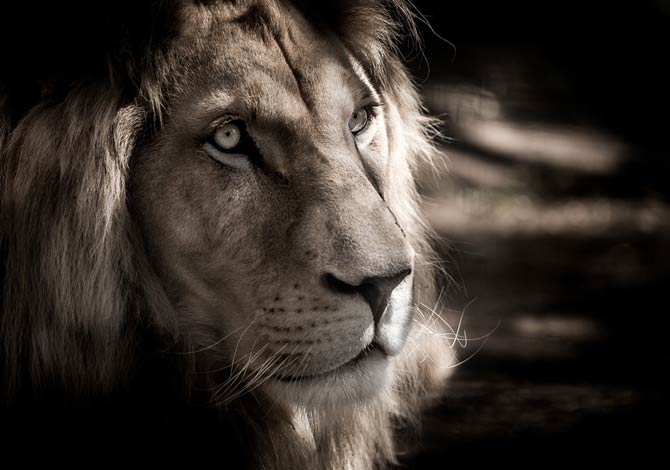
Taxonomy
African lions (Panthera leo) are members of the family Felidae, which includes all cats. Within the family Felidae, lions belong to the genus Panthera, which also includes tigers, jaguars, and leopards.
The scientific classification of African lions is as follows:
- Kingdom: Animalia
- Phylum: Chordata
- Class: Mammalia
- Order: Carnivora
- Family: Felidae
- Genus: Panthera
- Species: Panthera leo
African lions are closely related to other big cats, including tigers, jaguars, and leopards. These species all belong to the genus Panthera and share many physical and behavioral characteristics. However, lions are the only cats in the Panthera genus that are social, living and hunting in groups called prides.
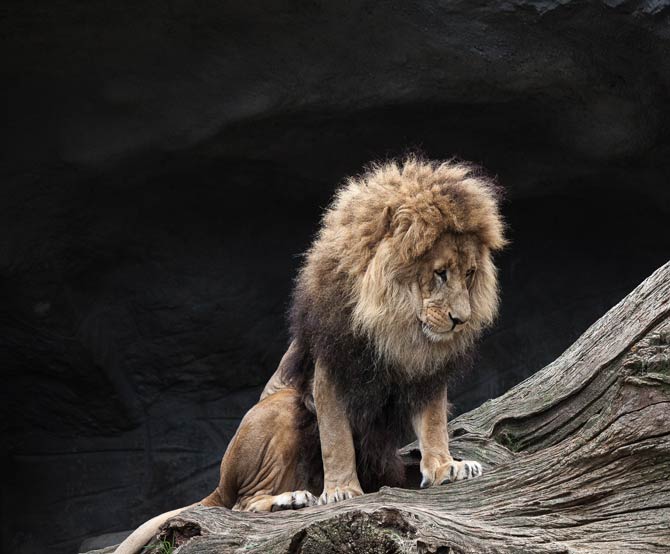
Subspecies of the African lions (Panthera leo)
There are two subspecies of African lions (Panthera leo): the savanna lion (Northern lion) and the forest lion (Southern lion, Southern African lion, southern subspecies).
Savanna lion (Panthera leo leo)
The savanna lion (Panthera leo leo) is the more widely recognized and widely distributed subspecies of African lion. It is found in savannas, grasslands, and semi-deserts across much of Africa, including countries such as Kenya, Tanzania, South Africa, and Zambia. Savanna lions are characterized by their large size, distinctive mane, and relatively dark coloration.
Forest lion (Panthera leo melanochaita)
The forest lion (Panthera leo melanochaita) is a smaller and less well-known subspecies of African lion that is found in the rainforests of West and Central Africa. Forest lions are smaller and less robust than savanna lions, and have a shorter, lighter mane. They are also more adapted to living in dense, forested habitats.
It is worth noting that the taxonomy of African lions is still being studied and there is some debate among scientists about the validity of the forest lion subspecies. Some scientists believe that forest lions may be more closely related to Asiatic lions (Panthera leo persica) than to savanna lions.
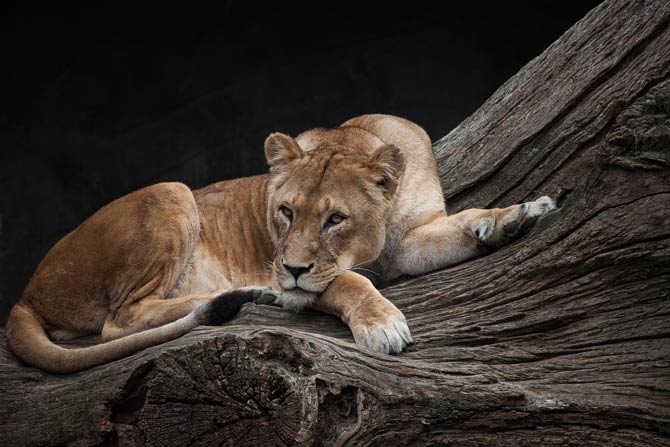
Name Etymology
The scientific name of the African lion, Panthera leo, is derived from the Greek word “panther,” which means “panther,” and the Latin word “leo,” which means “lion.” The word “panther” itself is derived from the ancient Greek word “panthēr,” which means “all-beasts.”
The common English name “lion” is also derived from the Latin word “leo.” The English word “lion” has been in use since the Old English period and is thought to be derived from the Latin word “leo” through the Old French word “liun.”
In many African languages, the word for “lion” is similar to the word for “king” or “chief.” This reflects the lion’s status as a top predator and a symbol of strength and power.

Fossil records
Other lion subspecies or sister species to the modern lion existed in prehistoric times
Lions have a long evolutionary history, and there have been several species and subspecies of lion that have existed in the past. Fossil evidence suggests that the first known lion-like carnivore appeared in Africa around 3.5 million years ago.
American lion
In prehistoric times, there were several species and subspecies of lion that lived in different parts of the world. For example, the American lion (Panthera leo atrox) was a subspecies of lion that lived in North and South America during the Pleistocene period (2.6 million to 11,700 years ago). The American lion was similar in size and appearance to the modern African lion, but had a shorter, thicker mane.
Cave lion
There were also several other species and subspecies of lion that lived in different parts of Africa and Eurasia during the Pleistocene period, including the Cave lion (Panthera leo spelaea), the Asiatic lion (Panthera leo persica), and the European lion (Panthera leo europaea).
Today, the only surviving species of lion is the African lion (Panthera leo). All other subspecies of lion are now extinct.
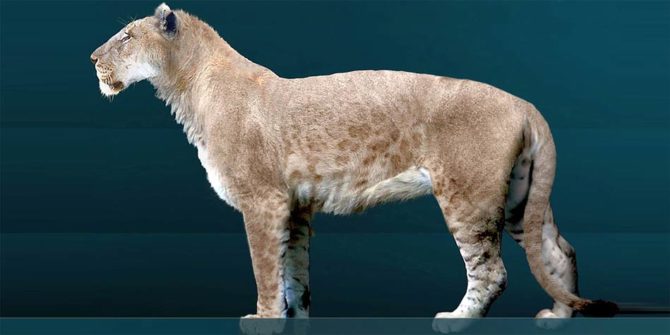
Evolution of lion (Panthera leo)
The Panthera lineage, which includes the lion (Panthera leo), tiger (Panthera tigris), jaguar (Panthera onca), and leopard (Panthera pardus), is thought to have genetically diverged from the common ancestor of the Felidae (the family of cats) around 9.32 to 4.47 million years ago. This divergence is estimated to have occurred during the Late Miocene or Early Pliocene period.
The Panthera lineage is characterized by the presence of a laryngeal chamber, which allows for the production of deep, loud roars. This feature is thought to have evolved as a way for these animals to communicate over long distances and to defend their territories.
The Panthera lineage is thought to have arisen in Asia, and some researchers believe that the first members of the Panthera lineage may have migrated to Africa around 4.5 million years ago. From Africa, the Panthera lineage is thought to have spread to other parts of the world, including Europe and the Americas.
It is worth noting that the evolutionary history of the Panthera lineage is still being studied, and there is ongoing debate among scientists about the exact timing and sequence of events that led to the divergence of the Panthera lineage from the common ancestor of the Felidae.

Characteristics
African lions (Panthera leo) are large carnivorous mammals that are native to Africa. They are the most social of all big cat species, and are known for their distinctive mane, which is longer and thicker in males than in females.
Some of the key characteristics of African lions
- Size: Male lions are larger than females, weighing up to 550 pounds (250 kilograms). Female lions are smaller, weighing up to 400 pounds (180 kilograms).
- Coat: African lions have a short, dense coat that ranges in color from light buff to tawny yellow. Their underside and the insides of their legs are lighter in color.
- Mane: Male lions are characterized by their mane, which is a fringe of long, thick hair that surrounds their head and neck. The mane is thought to protect the lion’s neck during fights and to attract females. Female lions do not have a mane.
- Head: African lions have a large, powerful head with a broad muzzle and long, sharp canine teeth. They also have small, rounded ears.
- Claws: African lions have retractable claws that they use for hunting and climbing. Their claws are particularly well-developed on their hind legs, which allows them to deliver powerful blows when they attack their prey.
- Tail: African lions have a long, tufted tail that they use for balance and communication. The tail is often waved or flicked when the lion is agitated or excited.
- Social behavior: African lions are social animals that live and hunt in groups called prides. Prides are led by a dominant male, and consist of females, their cubs, and a few subadult males. Lions are known for their cooperative hunting behavior, with multiple individuals working together to bring down large prey.
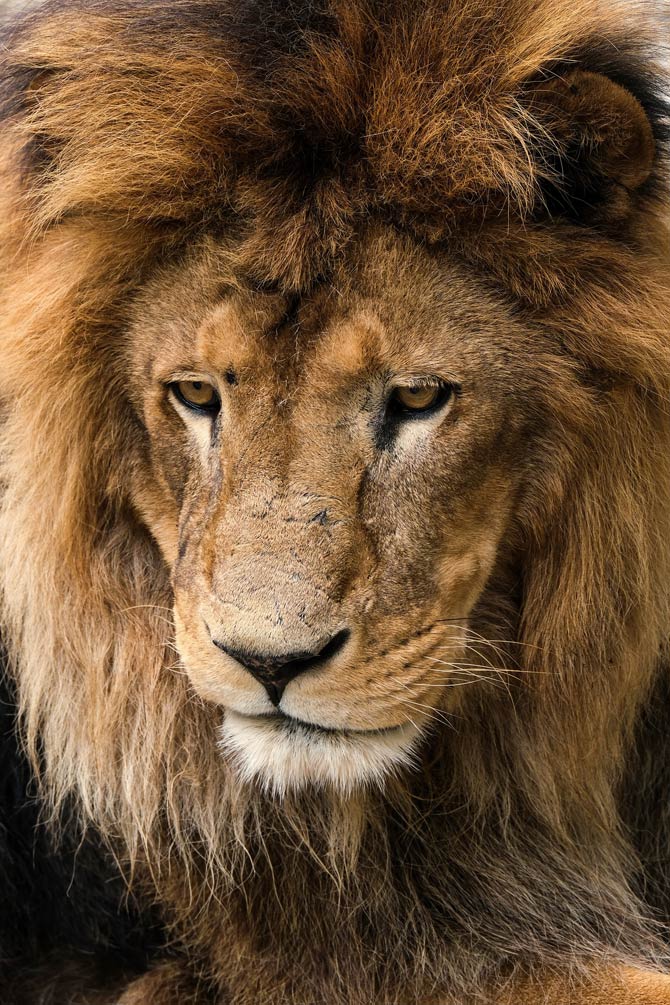
Size
The size of African lions (Panthera leo) varies depending on their age, sex, and location. In general, male lions are larger than females, and lions living in areas with plenty of food tend to be larger than those living in areas with less food.
The average dimensions of male and female African lions are as follows:
- Length: Male lions can reach lengths of up to 8.5 feet (2.6 meters) from the tip of their nose to the end of their tail, while females can reach lengths of up to 7.5 feet (2.3 meters).
- Height: Male lions can stand up to 4 feet (1.2 meters) tall at the shoulder, while females can stand up to 3.5 feet (1.1 meters) tall.
- Weight: Male lions can weigh up to 550 pounds (250 kilograms), while females can weigh up to 400 pounds (180 kilograms).
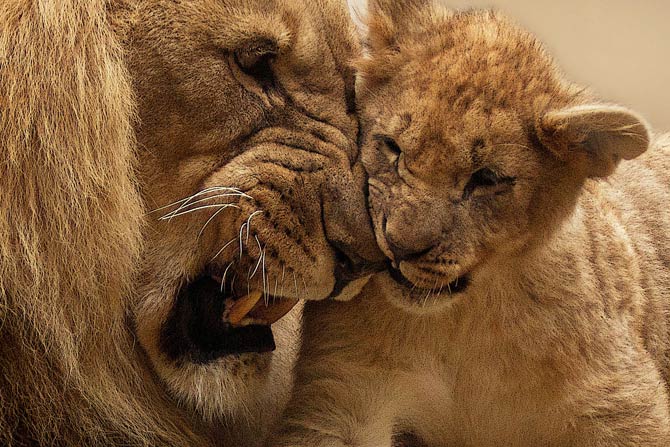
Mane
The mane is a distinctive feature of male African lions (Panthera leo). It is a fringe of long, thick hair that surrounds the head and neck of the lion. The mane is thought to protect the lion’s neck during fights and to attract females.
The color and thickness of a lion’s mane varies depending on the individual lion. Some lions have a mane that is light in color, while others have a mane that is darker. Some lions have a mane that is thin and wispy, while others have a mane that is thick and full.
The mane of a male lion begins to develop when the lion is around one year old, and continues to grow until the lion reaches sexual maturity at around three or four years of age. The mane of a lion is an important indicator of the lion’s age and reproductive status, and is thought to play a role in attracting females.
Female lions do not have a mane. Instead, they have a short, dense coat that ranges in color from light buff to tawny yellow. Their underside and the insides of their legs are lighter in color.
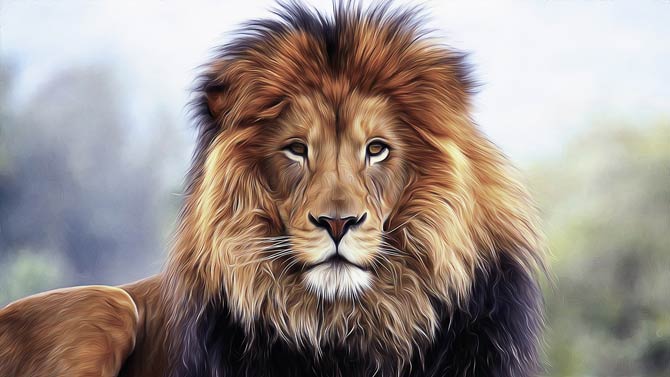
Why do lions have a mane?
The mane of a male African lion (Panthera leo) is thought to serve several functions, including protection, attraction, and communication.
One of the main functions of the mane is thought to be protection. The mane is made up of long, thick hair that surrounds the head and neck of the lion. It is thought to protect the lion’s neck during fights by providing an extra layer of padding and helping to prevent bites from other lions.
The mane is also thought to play a role in attracting females. The size and color of a lion’s mane are thought to be indicators of the lion’s age, health, and reproductive status. Female lions are believed to prefer males with larger, darker manes, as these characteristics are thought to be indicative of good genes and good overall health.
The mane is also thought to play a role in communication. Lions are social animals that live and hunt in groups called prides. The mane is thought to be an important visual signal that helps lions identify other members of their pride and communicate with one another.
It is worth noting that the exact function of the mane is still being studied, and there is ongoing debate among scientists about the specific role of the mane in lion biology and behavior.
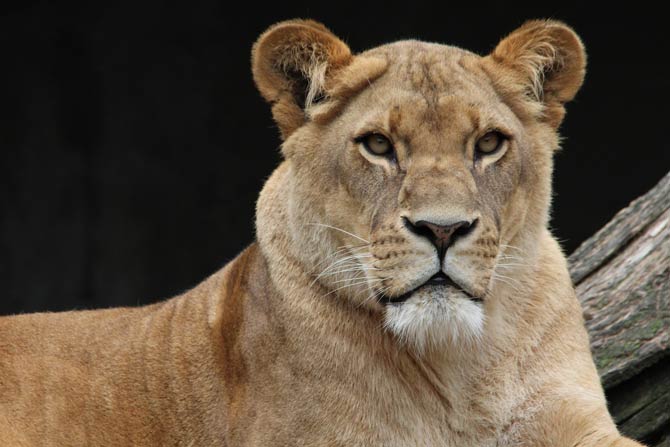
Color variation
The color of an African lion’s (Panthera leo) coat can vary slightly depending on the individual lion and its location. In general, African lions have a short, dense coat that ranges in color from light buff to tawny yellow. Their underside and the insides of their legs are lighter in color.
The color of a lion’s coat is thought to be an adaptation to the animal’s environment. Lions living in areas with more sunlight and heat tend to have lighter-colored coats, which may help to reflect heat and reduce the lion’s body temperature. Lions living in areas with less sunlight and cooler temperatures tend to have darker-colored coats, which may help to absorb heat and keep the lion warm.
It is worth noting that the color of a lion’s coat is not a reliable indicator of the lion’s age, sex, or subspecies. Lions of all ages, sexes, and subspecies can have coats that range in color from light to dark.
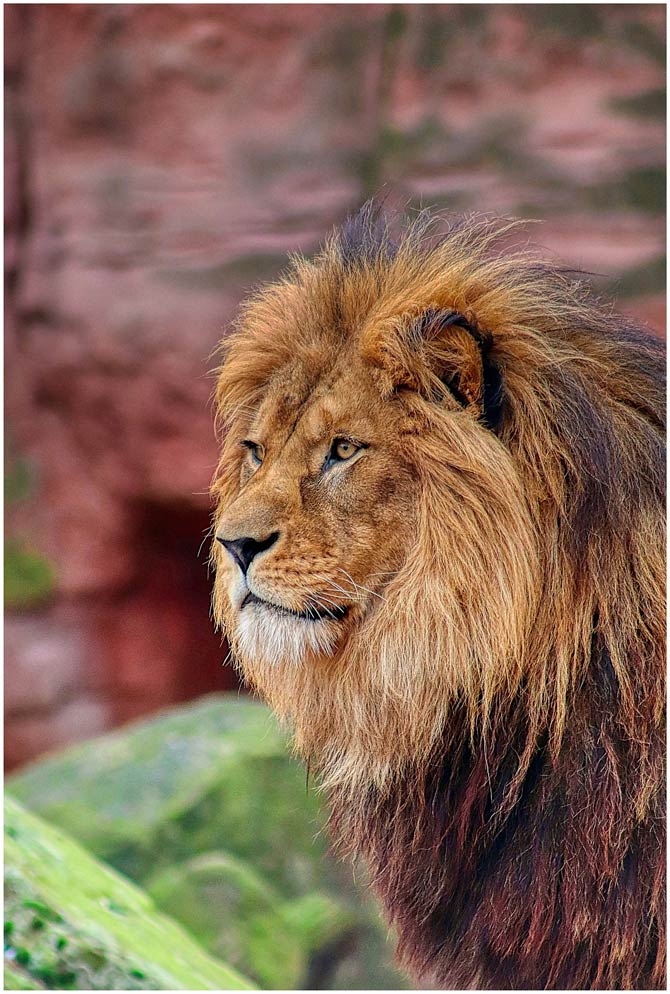
Distribution and habitat
African lions (Panthera leo) are found across much of Africa, including countries such as Kenya, Tanzania, South Africa, and Zambia. They are found in a variety of habitats, including savannas, grasslands, and semi-deserts.
Lions are adaptable animals that are able to survive in a wide range of environments. However, they are typically found in areas with plenty of prey, such as herds of antelope or zebras. Lions are also found near water sources, as they need to drink water on a daily basis.
Historically, African lions were found throughout much of Africa, including the Sahara Desert and parts of the Middle East. Today, their range has been greatly reduced, and they are now mostly found in protected areas and national parks.
Lions are considered a vulnerable species, with their population estimated to be between 20,000 and 25,000 individuals. Habitat loss, conflict with humans, and poaching are all major threats to lions, and conservation efforts are underway to protect and preserve their populations.
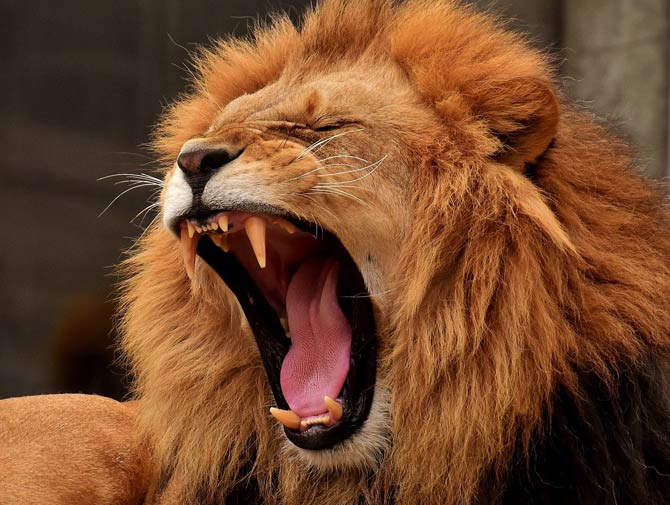
Historical range
Historically, African lions (Panthera leo) had a much wider range than they do today. They were found throughout much of Africa, including the Sahara Desert and parts of the Middle East. They were also found in parts of Europe and Asia.
Lions are thought to have been present in Africa for at least the past 2 million years, and they were once found in almost every habitat on the continent, from dense rainforests to open grasslands. They were also found in parts of Europe and Asia, where they lived in a variety of habitats, including forests, grasslands, and deserts.
Over time, the range of African lions has greatly contracted. Today, they are mostly found in protected areas and national parks in Africa, and their population is estimated to be between 20,000 and 25,000 individuals. The main threats to lions are habitat loss, conflict with humans, and poaching.
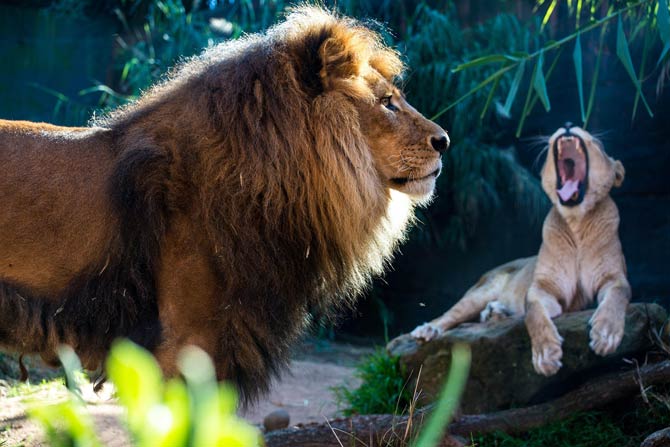
Behavior and ecology
African lions (Panthera leo) are social animals that live and hunt in groups called prides. Prides are led by a dominant male, and consist of females, their cubs, and a few subadult males. The size of a pride can vary, but typically consists of between 5 and 15 individuals.
Lions are known for their cooperative hunting behavior, with multiple individuals working together to bring down large prey, such as antelopes, zebras, and wildebeest. Lions are also opportunistic hunters and will prey on smaller animals, such as rodents and birds, if larger prey is not available.
In addition to hunting, lions spend a significant portion of their time resting and grooming. They are generally most active at dawn and dusk, and spend much of the day resting in the shade.
Lions are also territorial animals, and male lions defend their pride’s territory from other lions. Lions use vocalizations, such as roars and grunts, as well as physical displays, such as mane displays and scent marking, to communicate and defend their territory.
Lions have a complex social structure and communicate with one another through a variety of vocalizations and physical displays. They are also highly intelligent and are able to learn and adapt to new situations.
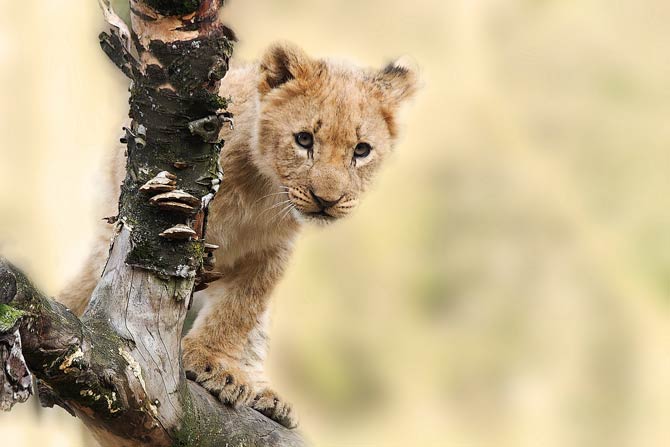
Group organization
African lions (Panthera leo) are social animals that live and hunt in groups called prides. Prides are led by a dominant male, and consist of females, their cubs, and a few subadult males. The size of a pride can vary, but typically consists of between 5 and 15 individuals.
Within a pride, lions have a complex social structure, with clear hierarchies and roles for each member. The dominant male is responsible for defending the pride’s territory and providing for the group. The females are responsible for hunting and caring for the cubs. Subadult males may assist with hunting, but are typically driven out of the pride once they reach sexual maturity and start to compete with the dominant male for dominance.
Lions have a matriarchal social structure, with females typically staying with the same pride for their entire lives, while males tend to move between prides. When a new male takes over a pride, he may kill the cubs fathered by the previous dominant male in order to bring the females into estrus and father his own offspring.
Lions communicate with one another through a variety of vocalizations and physical displays. They use vocalizations, such as roars and grunts, as well as physical displays, such as mane displays and scent marking, to communicate and defend their territory. Lions are also highly intelligent and are able to learn and adapt to new situations.
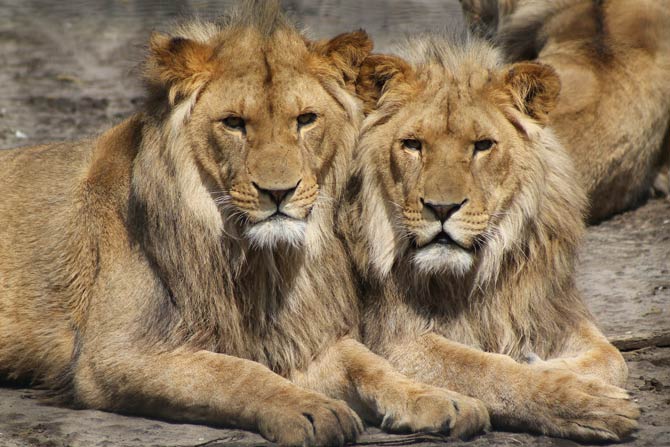
Hunting and diet
African lions (Panthera leo) are carnivorous animals that primarily hunt large mammals, such as antelopes, zebras, and wildebeest. Lions are known for their cooperative hunting behavior, with multiple individuals working together to bring down large prey. Lions are also opportunistic hunters and will prey on smaller animals, such as rodents and birds, if larger prey is not available.
Lions are stealthy predators that use their keen senses, including their excellent vision, hearing, and sense of smell, to locate and track their prey. They are also powerful and agile, and are able to deliver powerful bites and blows with their sharp teeth and claws.
Lions typically hunt at dawn or dusk, when their prey is most active. They use a variety of strategies to catch their prey, including stalking, chasing, and ambushing. Once they have caught their prey, lions use their sharp teeth and claws to kill it.
Lions do not need to drink water on a daily basis, as they obtain much of their hydration from the moisture in their prey. However, they will drink water if it is available.
Lions are social animals and hunt in groups, with each individual contributing to the success of the hunt. After a successful hunt, the lions will share the kill, with the dominant male typically getting the first choice of the meat.
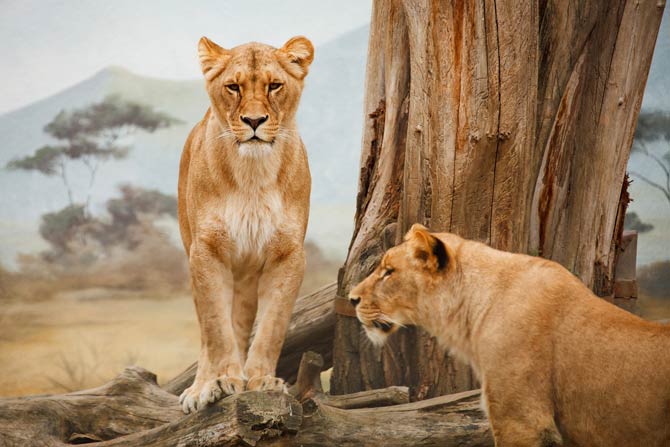
Why are lions the only cats that live in packs?
Lions (Panthera leo) are the only big cat species that live in groups called prides. Prides are led by a dominant male, and consist of females, their cubs, and a few subadult males. The size of a pride can vary, but typically consists of between 5 and 15 individuals.
Lions are the only big cat species that live in prides because of the benefits that group living provides. Lions are large, powerful animals that require a significant amount of food to survive. By hunting and living in groups, lions are able to take down larger prey and share the kill among the group, which helps to provide for all members of the pride.
In addition to the benefits of group living, there are several other factors that may contribute to lions being the only big cat species that live in prides. Lions are social animals that rely on vocalizations and physical displays to communicate and establish social bonds. They are also highly intelligent and are able to learn and adapt to new situations. These social and cognitive abilities may help to facilitate group living and the development of complex social structures.
It is worth noting that while lions are the only big cat species that live in prides, there are other cat species that live in groups, such as cheetahs and cougars. These species form groups for a variety of reasons, including protection, reproduction, and hunting.
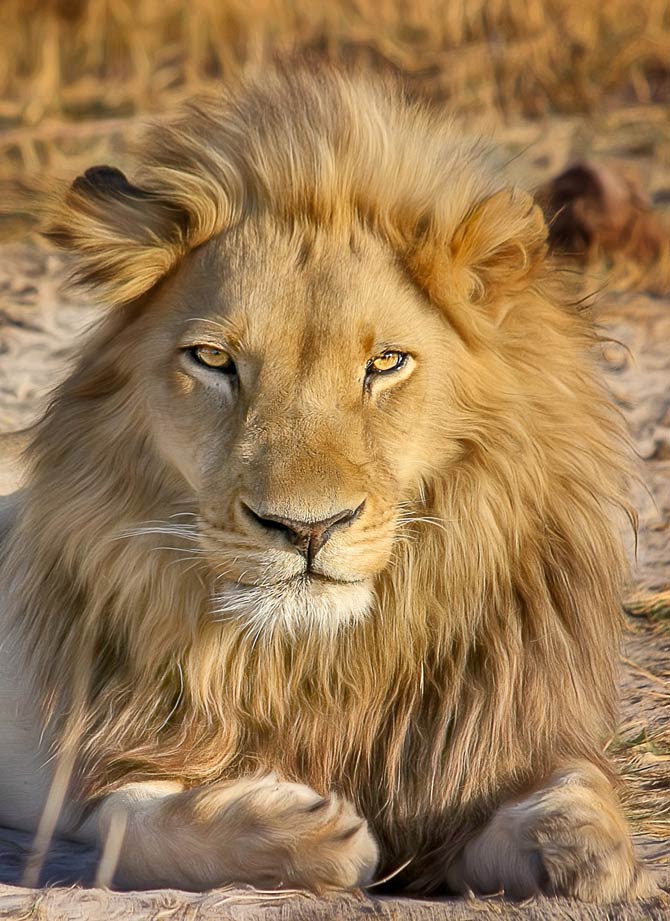
Predatory competition
In many ecosystems, predators must compete with each other for resources, such as food and territory. This competition can occur between individuals of the same species, as well as between individuals of different species.
In the case of African lions (Panthera leo), predatory competition can occur between different prides of lions, as well as between lions and other predators, such as hyenas and leopards.
Lions are territorial animals and use vocalizations, such as roars and grunts, as well as physical displays, such as mane displays and scent marking, to communicate and defend their territory. When two prides of lions encounter each other, the males may engage in physical fights to establish dominance and defend their territory. These fights can be violent and may result in injury or death.
Lions may also compete with other predators for food and territory. For example, lions and hyenas are known to compete for the same prey species, and may engage in aggressive encounters over access to a kill. Lions may also defend their territory from other predators, such as leopards, in order to protect their food and breeding grounds.
Predatory competition is a natural part of the ecosystem, and can help to shape the behavior and distribution of predator populations. However, when predatory competition is intense, it can lead to conflicts and impacts on the populations of the competing species.
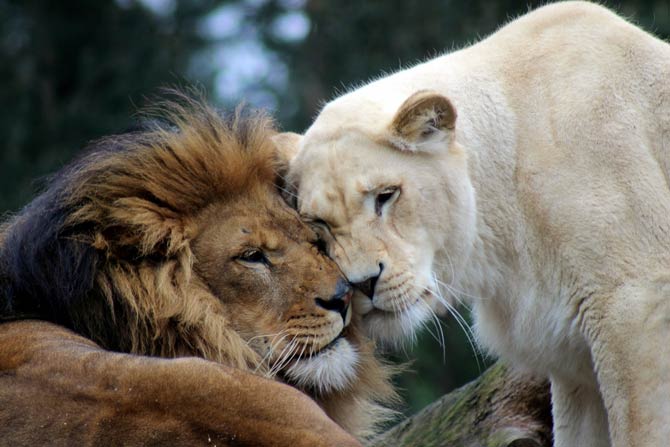
Reproduction and life cycle
African lions are polygamous animals, which means that males mate with multiple females. Lions reach sexual maturity at around three or four years of age, and males typically mate with several females in their pride.
Female lions are induced ovulators, which means that they ovulate in response to mating rather than on a set schedule. Female lions are also polyestrous, which means that they can have multiple estrous cycles throughout the year.
Lions have a gestational period of approximately 110 days, and females typically give birth to a litter of two to four cubs. Cub mortality is high, with up to 50% of cubs dying in their first year of life.
Cubs are born blind and weigh only a few pounds at birth. They are dependent on their mother for food and protection, and begin to eat solid food at around six weeks of age. Female lions typically nurse their cubs for around 18 months, and then begin to teach them how to hunt.
Lions are highly social animals, and cubs are raised and protected by the entire pride. Cubs remain with their mother’s pride until they reach sexual maturity at around three or four years of age. At this point, male lions may disperse from the pride and start their own, while females typically remain with their mother’s pride for their entire lives.
Lions have a lifespan of around 10 to 14 years in the wild, although some individuals may live longer. Factors such as disease, predation, and conflict with humans can all impact a lion’s lifespan.
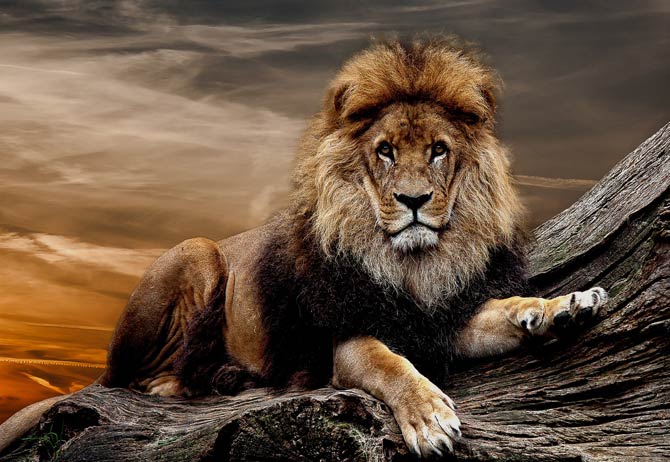
Health and mortality
African lions are vulnerable to a variety of threats that can impact their health and mortality. Some of the main threats to lions include:
- Disease: Lions can be affected by a variety of diseases, including infectious diseases and parasites. These diseases can be transmitted through contact with other animals, through contaminated food or water, or through bites from infected insects.
- Predation: Lions are at risk of being preyed upon by other animals, such as crocodiles, hyenas, and leopards. Cub mortality is particularly high, with up to 50% of cubs dying in their first year of life.
- Conflict with humans: Lions can come into conflict with humans when they prey on livestock or attack humans. This can lead to retaliatory killings by humans, which can impact lion populations.
- Habitat loss: Lions require large areas of land to survive, and habitat loss can impact their populations. Human activities, such as agriculture and urbanization, can lead to the loss of habitat for lions and other wildlife.
- Poaching: Lions are often targeted by poachers for their skin, bones, and other body parts, which can be used for traditional medicine, decorative items, and other purposes. Poaching can have a significant impact on lion populations.
Conservation efforts are underway to protect and preserve lion populations, including efforts to reduce habitat loss, reduce conflict with humans, and combat poaching.
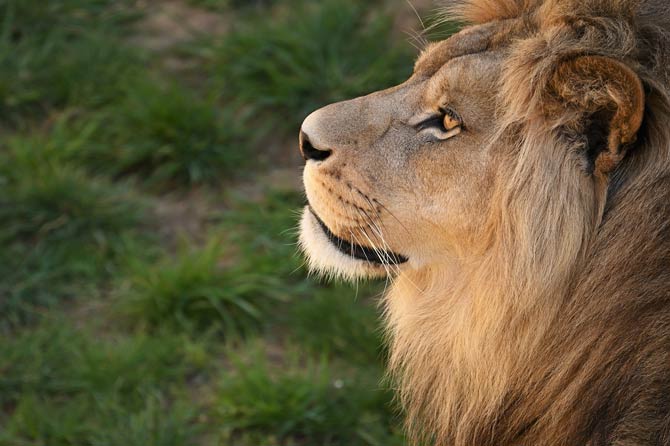
Communication
African lions communicate with one another through a variety of vocalizations and physical displays. These forms of communication serve a variety of purposes, including establishing social bonds, communicating with other members of the pride, and defending territory.
Some of the main vocalizations and physical displays used by lions include:
- Roars: Lions are known for their powerful roars, which can be heard for up to 5 miles (8 kilometers) away. Roars are used by lions to communicate with other members of their pride and to defend their territory from other lions.
- Grunts: Lions also use grunts, growls, and other vocalizations to communicate with one another. These vocalizations are used to convey a variety of messages, such as warning, submission, and aggression.
- Scent marking: Lions use scent marking to communicate with other members of their pride and to defend their territory. Lions have scent glands in their paws and on their face, and they use these glands to mark their territory with their scent.
- Mane displays: Male lions have a distinctive mane, which is a fringe of long, thick hair that surrounds their head and neck. The mane is thought to play a role in attracting females and in defending territory. Male lions may puff up their mane or shake it during displays of aggression or dominance.
Lions also use body language and facial expressions to communicate with one another. For example, they may arch their backs, puff out their mane, or lower their body posture to convey aggression, while they may lick each other or rub against one another to show affection or submission. Lions also use their tails to communicate, and may wag, twitch, or lash their tails to convey different messages.
Lions are highly social animals, and communication is an important aspect of their social interactions. Through the use of vocalizations, physical displays, and body language, lions are able to establish and maintain social bonds, communicate with other members of their pride, and defend their territory.

Threats
African lions (Panthera leo) face a number of threats that impact their populations and have led to their classification as a vulnerable species. Some of the main threats to lions include:
- Habitat loss: Lions require large areas of land to survive, and habitat loss can impact their populations. Human activities, such as agriculture and urbanization, can lead to the loss of habitat for lions and other wildlife.
- Conflict with humans: Lions can come into conflict with humans when they prey on livestock or attack humans. This can lead to retaliatory killings by humans, which can impact lion populations.
- Poaching: Lions are often targeted by poachers for their skin, bones, and other body parts, which can be used for traditional medicine, decorative items, and other purposes. Poaching can have a significant impact on lion populations.
- Disease: Lions can be affected by a variety of diseases, including infectious diseases and parasites. These diseases can be transmitted through contact with other animals, through contaminated food or water, or through bites from infected insects.
- Predation: Lions are at risk of being preyed upon by other animals, such as crocodiles, hyenas, and leopards. Cub mortality is particularly high, with up to 50% of cubs dying in their first year of life.
Conservation efforts are underway to protect and preserve lion populations, including efforts to reduce habitat loss, reduce conflict with humans, and combat poaching. These efforts aim to ensure the long-term survival of lion populations and to protect these iconic animals for future generations.

Poaching
Poaching is the illegal hunting or capture of wild animals, and it is one of the main threats to African lions (Panthera leo). Lions are often targeted by poachers for their skin, bones, and other body parts, which can be used for traditional medicine, decorative items, and other purposes.
Poaching can have a significant impact on lion populations, as it can lead to the deaths of individual lions and can disrupt the social dynamics of prides. Poaching can also contribute to habitat loss, as it can lead to the destruction of areas where lions live and hunt.
Lions are protected by national and international laws, and poaching is illegal in many countries. However, poaching remains a significant threat to lions, and efforts are underway to combat this problem. These efforts include measures such as strengthening laws and enforcement, educating communities about the dangers of poaching, and supporting conservation organizations that work to protect lions and other endangered species.
In addition to these efforts, it is important to address the root causes of poaching, such as the demand for illegal animal products and the lack of economic opportunities in areas where poaching is prevalent. By addressing these underlying issues, it may be possible to reduce the threat of poaching and help to protect lion populations in the long term.
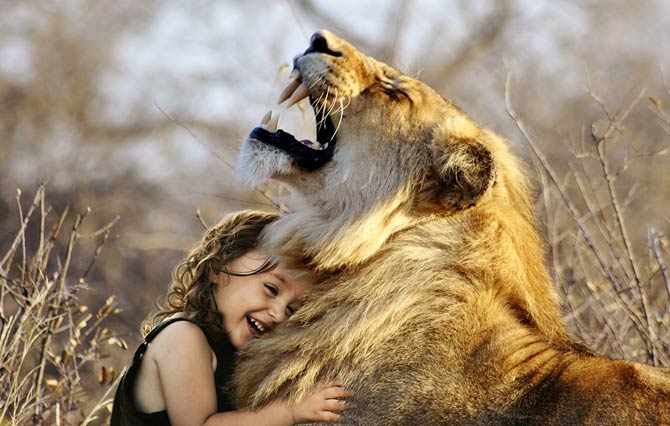
Conservation
Conservation is the protection and preservation of natural resources and ecosystems, including the species that inhabit them. Conservation efforts are important for protecting the long-term survival of species and for preserving the biodiversity of our planet.
African lions (Panthera leo) are classified as a vulnerable species by the International Union for Conservation of Nature (IUCN), which means that they are at risk of becoming endangered. As a result, there are a number of conservation efforts underway to protect and preserve lion populations.
Some of the main efforts to conserve lions
- Protecting habitat: Lions require large areas of land to survive, and conservation efforts often focus on protecting and preserving the habitat of these animals. This can include measures such as creating protected areas, working with local communities to reduce habitat loss, and promoting sustainable land use practices.
- Reducing conflict with humans: Lions can come into conflict with humans when they prey on livestock or attack humans. Conservation efforts may focus on reducing this conflict through measures such as fencing, livestock guarding dogs, and compensation programs for livestock losses.
- Combating poaching: Poaching is a significant threat to lions, and efforts are underway to combat this problem. This may include measures such as strengthening laws and enforcement, educating communities about the dangers of poaching, and supporting conservation organizations that work to protect lions and other endangered species.
- Supporting research and monitoring: Conservation efforts often involve supporting research and monitoring programs to better understand the biology, behavior, and distribution of lion populations. This information can be used to inform conservation efforts and to develop strategies for protecting and preserving these animals.
By working to protect and preserve lion populations, it is possible to ensure the long-term survival of these iconic animals and to help preserve the biodiversity of our planet.
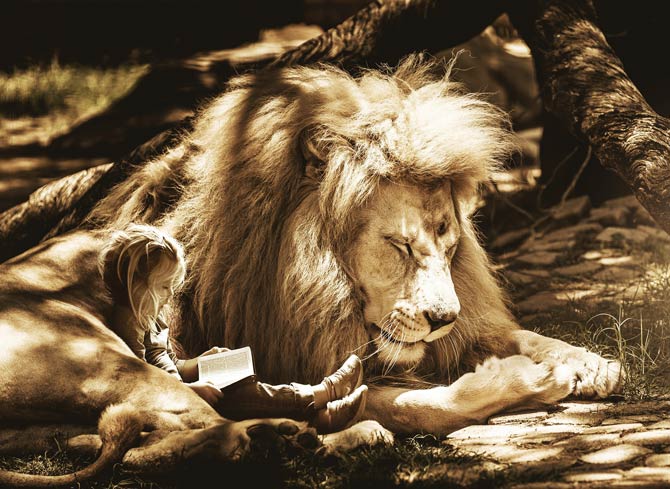
In captivity and the zoo
African lions are often kept in captivity in zoos, wildlife sanctuaries, and other facilities. Captive lions may be used for a variety of purposes, including education, research, and conservation.
Captive lions are typically provided with food, water, and shelter, and may receive medical care and other forms of support. The conditions in which captive lions are kept can vary widely, and some facilities may provide more naturalistic enclosures or allow for more social interaction than others.
The welfare of captive lions is a complex and controversial issue, and there are differing opinions on the value of keeping these animals in captivity. Some people argue that captive lions can serve an important educational and conservation role, and that they can provide valuable insights into the biology and behavior of these animals. Others argue that captivity can be stressful and detrimental to the welfare of lions, and that conservation efforts should focus on protecting wild populations rather than maintaining captive ones.
Regardless of one’s perspective on the value of keeping lions in captivity, it is important that any facility that keeps these animals meets the basic needs of the animals and provides for their welfare. This includes providing a suitable diet, access to water, and appropriate housing, as well as ensuring that the animals receive appropriate medical care and are not subjected to any form of abuse or neglect.
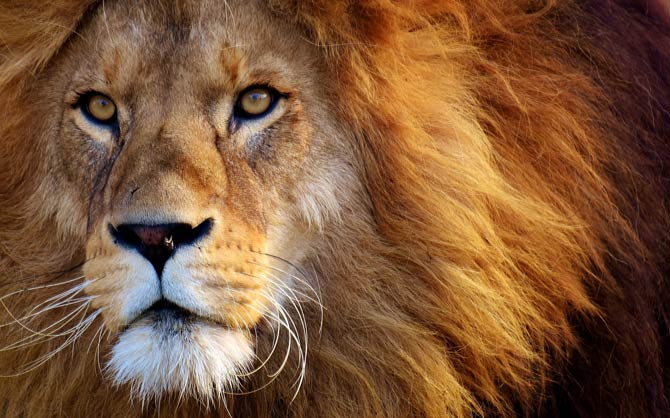
Interactions with humans
African lions (Panthera leo) have a long history of interactions with humans, and these interactions have often been complex and varied. In some cases, lions have been revered and respected by human societies, while in other cases they have been feared and hunted.
Lions have long been a symbol of power and strength, and they have been featured in the mythology, art, and literature of many cultures. In some cultures, lions have been revered as spiritual or religious symbols, and have been depicted as powerful, wise, and noble creatures.
Lions have also been featured in circuses, zoos, and other forms of entertainment, and have been used to attract visitors and generate income. Some people argue that these forms of entertainment can provide valuable education and conservation benefits, while others argue that they can be stressful and detrimental to the welfare of the animals.
In some cases, lions have come into conflict with humans, particularly when they prey on livestock or attack humans. This can lead to retaliatory killings by humans, which can impact lion populations. Conservation efforts are often focused on reducing conflict between humans and lions and finding ways to coexist peacefully.
Overall, the interactions between humans and lions have been complex and varied, and have been shaped by cultural, economic, and ecological factors. As the human population continues to grow and expand, it is important to find ways to ensure the long-term survival of lion populations and to find ways to coexist peacefully with these iconic animals.

Man-eating
Man-eating is a term used to describe the behavior of predators, including lions (Panthera leo), that prey on humans. While all large carnivores are capable of attacking and killing humans, man-eating is relatively rare and tends to occur under specific circumstances.
Lions are known to prey on humans in some parts of Africa, particularly in areas where human populations are increasing and lions are coming into conflict with humans. This can occur when lions prey on livestock or attack humans who venture into lion habitat. Man-eating by lions is most common in areas where lion populations are declining or where the availability of natural prey is limited.
Man-eating by lions is a serious problem, as it can lead to conflicts between humans and lions and can have a significant impact on both human and lion populations. Conservation efforts often focus on finding ways to reduce conflict between humans and lions and to find ways to coexist peacefully. This can include measures such as fencing, livestock guarding dogs, and compensation programs for livestock losses.
It is important to note that man-eating by lions is relatively rare, and that the vast majority of lions do not prey on humans. Most lion attacks on humans occur when humans encroach on lion territory or when lions are attracted to human settlements due to the availability of food. By understanding the factors that contribute to man-eating by lions, it is possible to reduce the risk of conflict and to find ways to coexist peacefully with these iconic animals.
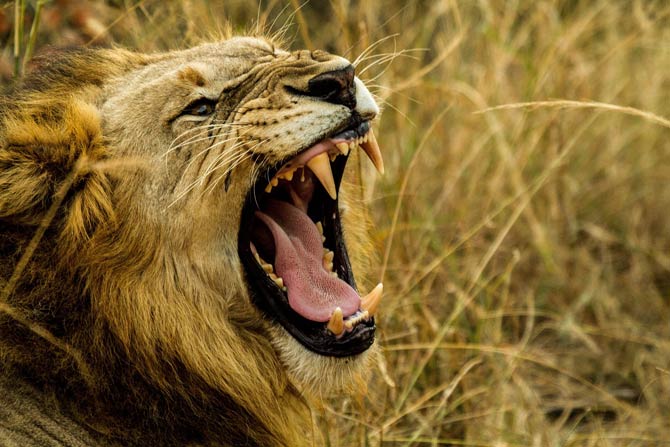
Famous Man-eating lions
There have been a number of instances of man-eating by lions that have gained notoriety throughout history. Some famous examples of man-eating lions include:
The Tsavo Man-eaters: In 1898, a pair of man-eating lions terrorized the workers building the Kenya-Uganda railway in the Tsavo region of Kenya. The lions are believed to have killed and eaten over 100 people, and their attacks disrupted the construction of the railway. The lions were eventually killed by a British hunter, who wrote a book about his experiences called “The Man-Eaters of Tsavo.”
The Mfuwe Man-eater: In 1991, a man-eating lion known as the Mfuwe Man-eater terrorized the village of Mfuwe in Zambia, killing and eating six people. The lion was eventually killed by a group of hunters, and its skin and head were preserved and put on display in the local museum.
The Njombe Man-eater: In 2002, a man-eating lion known as the Njombe Man-eater terrorized the village of Njombe in Tanzania, killing and eating a number of people. The lion was eventually killed by a group of hunters, and its skin and head were preserved and put on display in the local museum.
While these cases of man-eating by lions are famous, they are relatively rare, and most lions do not prey on humans. Most lion attacks on humans occur when humans encroach on lion territory or when lions are attracted to human settlements due to the availability of food. By understanding the factors that contribute to man-eating by lions, it is possible to reduce the risk of conflict and to find ways to coexist peacefully with these iconic animals.

Cultural significance
African lions (Panthera leo) have a long history of cultural significance and have played a prominent role in the mythology, art, and literature of many cultures. Lions have often been revered as powerful, wise, and noble creatures, and have been depicted as symbols of strength, courage, and royalty.
In many cultures, lions have been associated with spiritual or religious beliefs and practices, and have been revered as divine or sacred animals. For example, in ancient Egyptian mythology, lions were associated with the sun god Ra and were often depicted in art and sculpture. In Hinduism, the goddess Durga is sometimes depicted riding on a lion, and the lion is a symbol of strength and courage in Hindu mythology.
Lions have also been featured in literature and popular culture, and have often been depicted as heroic or noble animals. For example, the story of the lion Aslan in C.S. Lewis’s “The Chronicles of Narnia” series has been widely read and admired, and the lion has been featured in a number of other books, movies, and TV shows.
Overall, the cultural significance of lions is varied and complex, and reflects the diverse ways in which these animals have been perceived and revered by different cultures throughout history.
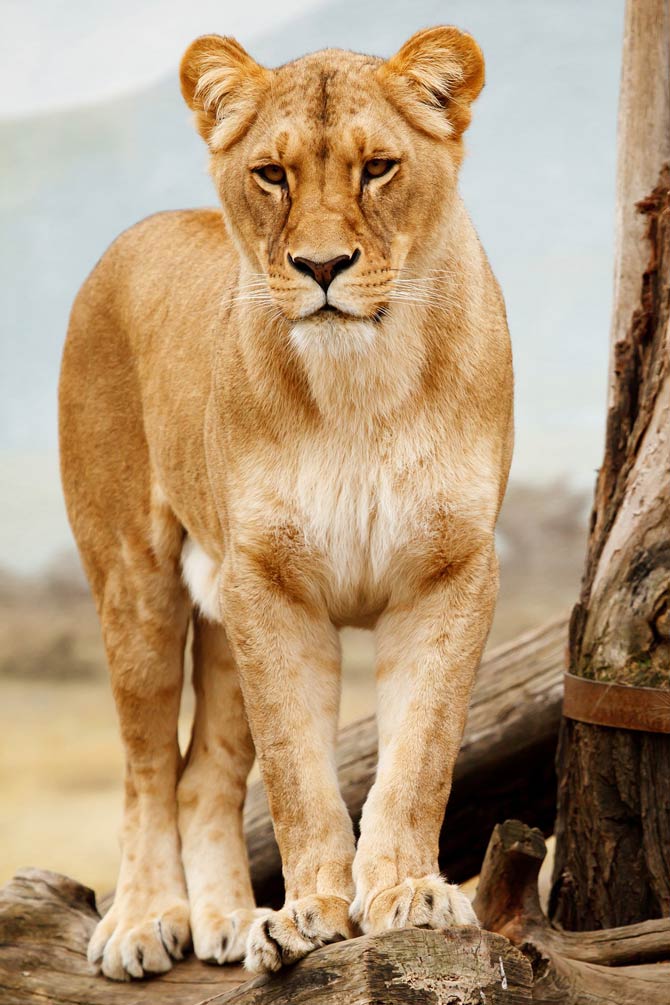
Population
African lions (Panthera leo) are classified as a vulnerable species by the International Union for Conservation of Nature (IUCN), which means that they are at risk of becoming endangered. The lion population has declined significantly in recent decades due to a variety of factors, including habitat loss, conflict with humans, and poaching.
The population of African lions (Panthera leo) has declined significantly over the past century due to a variety of factors, including habitat loss, conflict with humans, and poaching. According to the International Union for Conservation of Nature (IUCN), the global lion population is estimated to have declined by around 43% over the past 21 years, and the population is now thought to be around 20,000 individuals with the majority of lions found in eastern and southern Africa.. However, lion populations are highly fragmented, and individual populations can vary widely in size and distribution.
In some areas, lion populations are stable or even increasing, thanks in part to conservation efforts. In other areas, lion populations are in decline, often due to habitat loss, conflict with humans, and poaching.
Efforts are underway to protect and preserve lion populations, including efforts to reduce habitat loss, reduce conflict with humans, and combat poaching. These efforts are important for ensuring the long-term survival of lions and for preserving the biodiversity of our planet.
Lion populations have been impacted by a number of factors, including habitat loss due to human development, farming, and mining, as well as conflict with humans over issues such as livestock predation and human-wildlife conflict. Poaching for the illegal trade in lion parts, including teeth, claws, and skins, has also had a significant impact on lion populations.
Efforts are underway to protect and preserve lion populations, including efforts to reduce habitat loss, reduce conflict with humans, and combat poaching. These efforts are important for ensuring the long-term survival of lions and for preserving the biodiversity of our planet.
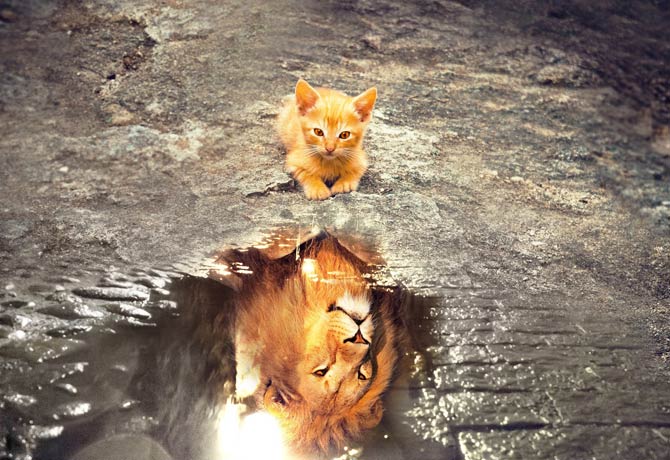
Lions in movies
Lions have been featured in a number of movies throughout the years, and have often been depicted as powerful, majestic, and noble animals. Some examples of movies that feature lions include:
- “The Lion King”: This animated Disney movie, released in 1994, tells the story of a young lion named Simba who must overcome challenges and reclaim his place as the rightful king of the Pride Lands. The movie features a memorable cast of characters, including Rafiki the wise old baboon, Scar the evil uncle, and Timon and Pumbaa the lovable meerkat and warthog.
- “Born Free”: This 1966 movie tells the true story of Joy and George Adamson, who raised a lion cub named Elsa and eventually released her back into the wild. The movie, which was based on Joy Adamson’s bestselling book of the same name, was a critical and commercial success and spawned a number of sequels and TV shows.
- “The Ghost and the Darkness”: This 1996 movie tells the fictionalized story of two man-eating lions that terrorized the workers building the Kenya-Uganda railway in the late 1800s. The movie, which stars Val Kilmer and Michael Douglas, is based on the true story of the Tsavo Man-eaters, who are believed to have killed and eaten over 100 people.
Lions have also been featured in a number of other movies, including “The Lion in Winter,” “The Lion, the Witch, and the Wardrobe,” and “The Lion King: The Lion King 1½.” These movies showcase the enduring appeal of lions and the enduring fascination that humans have with these powerful and majestic animals.
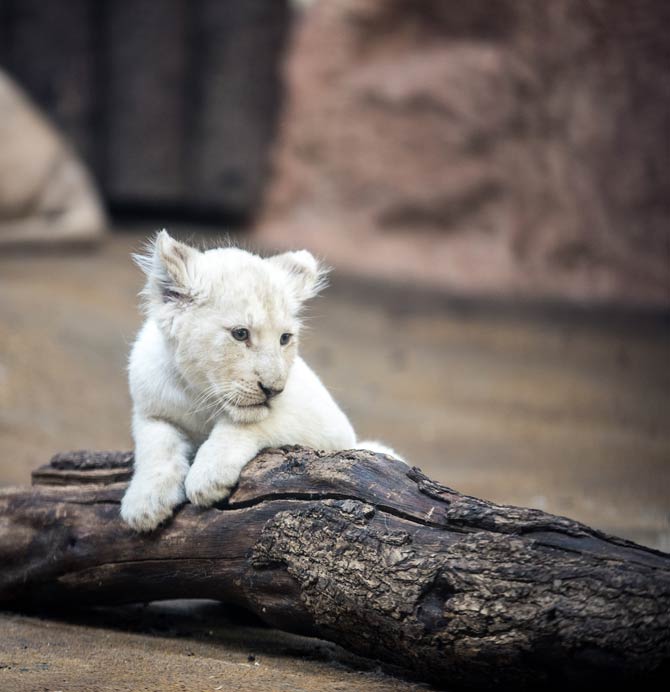
White lions
White lions are a rare color variation of African lions (Panthera leo) that are characterized by their white or pale-colored coats. White lions are not a separate subspecies of lions, but rather are a result of a genetic mutation that causes a lack of pigmentation in their fur.
White lions are native to a small area in South Africa known as the Timbavati region, and are thought to have been present in this area for centuries. White lions were traditionally revered by local communities, and were often protected and hunted only by the most skilled hunters.
White lions were largely unknown to the outside world until the 1960s, when they were first brought to the attention of the scientific community. In the years since, white lions have gained international attention, and have been featured in a number of books, movies, and TV shows.
White lions are considered to be rare and are protected by national and international laws. They are classified as a vulnerable species by the International Union for Conservation of Nature (IUCN), and efforts are underway to protect and preserve their populations.
There is some controversy surrounding the breeding and captivity of white lions, as some people argue that these animals should only be kept in the wild and that breeding them in captivity may have negative impacts on their welfare and conservation status. Regardless of one’s perspective on the issue, it is important to ensure that the basic needs of white lions are met and that they are not subjected to any form of abuse or neglect.

Detailed data / size
Lion (Panthera leo)
- Length of the body with a tail: up to 300 cm (9ft 10in)
- Body length:
- males: 184–208 cm (72–82 in)
- females: 160–184 cm (63–72 in)
- Tail length:
- males: 82.5–93.5 cm (32.5–36.8 in)
- females: 72–89.5 cm (28.3–35.2 in)
- Height: up to 123 cm (4ft 0.4in)
- Weight: up to 280 kg (617lb)
- males: on average: 186.55–225 kg (411.3–496.0 lb)
- females: 118.37–143.52 kg (261.0–316.4 lb)
- Lifespan:
- in the wild – 20 years
- in captivity – 30 years.
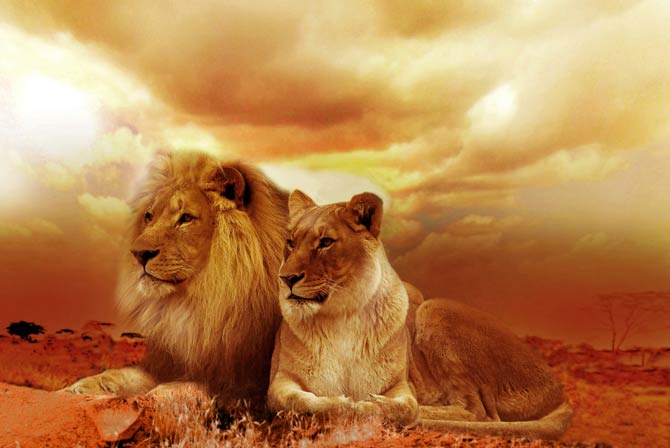
Interesting facts
Here are a few interesting facts about African lions (Panthera leo):
- Lions are the second-largest living cat species, after tigers. Adult male lions can weigh up to 726.5 pounds (330 kilograms) and can stand up to 11.5 feet (3.5 meters) tall at the shoulder.
- Lions are the only cats that live in groups, called prides. A pride typically consists of several females, their cubs, and one or more males. Lions are highly social animals, and pride members work together to hunt, defend territory, and care for their young.
- Lions are known for their distinctive manes, which are thicker, longer, and darker in males than in females. The mane is thought to protect the neck during fights and to make males appear more intimidating to other lions and to potential mates.
- Lions are known for their powerful roars, which can be heard up to 5 miles (8 kilometers) away. Lions use their roars to communicate with other members of their pride, to defend their territory, and to attract mates.
- Lions are found in a variety of habitats, including grasslands, savannas, and woodlands. They are native to Africa, and are found in countries such as South Africa, Tanzania, Kenya, and Zambia.
- Lions are classified as a vulnerable species by the International Union for Conservation of Nature (IUCN), due to habitat loss, conflict with humans, and poaching. Conservation efforts are underway to protect and preserve lion populations, including efforts to reduce habitat loss, reduce conflict with humans, and combat poaching.
